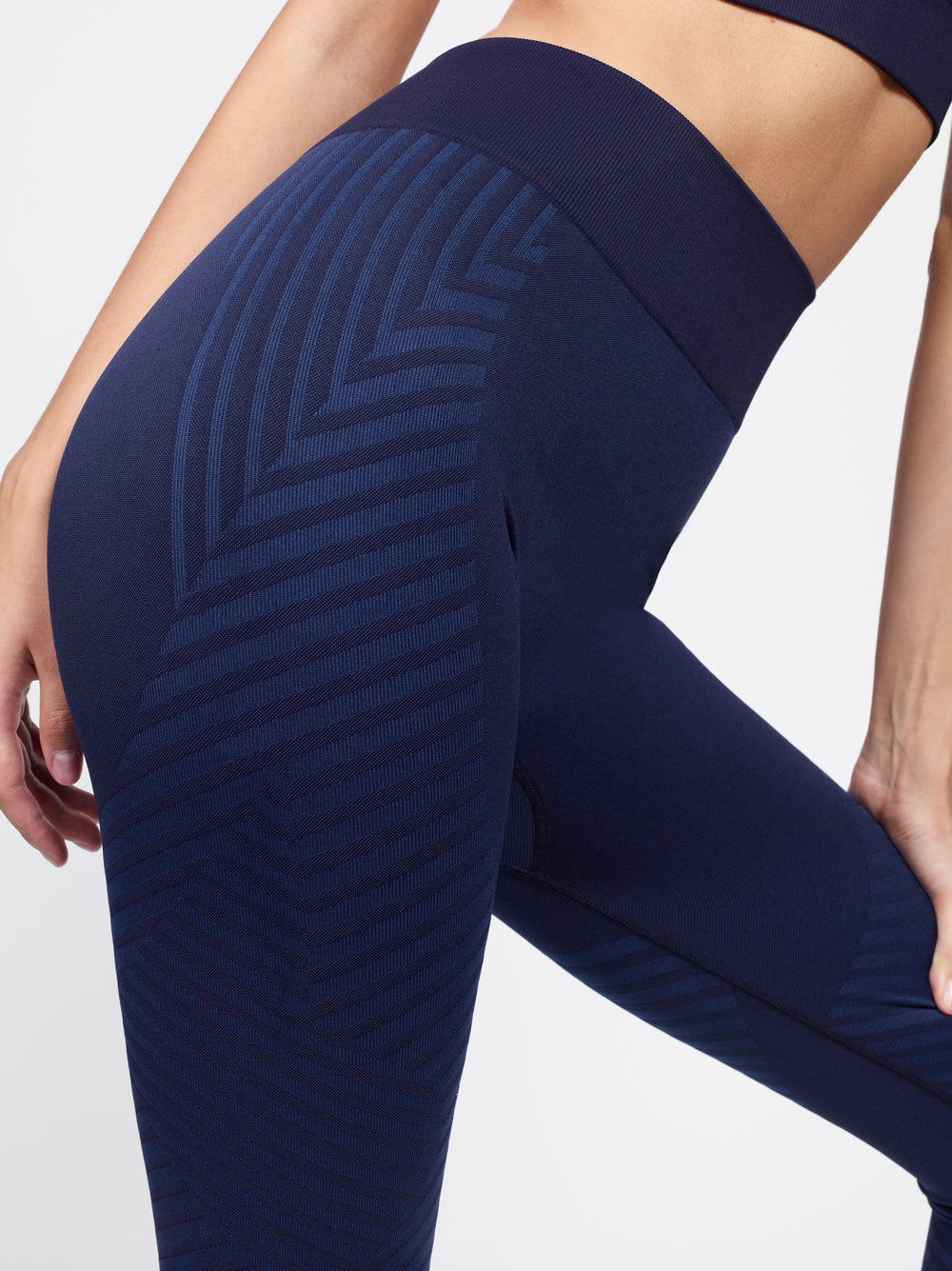
Triangle Pose, known as "Trikonasana" in Sanskrit, is a fundamental yoga posture that offers a wide range of physical and mental benefits. This pose is a cornerstone of many yoga practices and is celebrated for its ability to enhance strength, flexibility, balance, and mindfulness. In this comprehensive guide, we will explore the essence of Triangle Pose, its alignment principles, variations, and the numerous advantages it brings to your yoga journey.
The Essence of Triangle Pose
Triangle Pose is a standing yoga asana that gets its name from the geometric shape it forms with the body: a triangle. It combines elements of stretching, balancing, and twisting, making it a versatile and dynamic posture.
Key characteristics of Triangle Pose include:
**Straight Lines:** In Triangle Pose, the body creates straight lines: one vertical line from the crown of the head to the heels and two horizontal lines formed by the extended arms.
**Triangle Shape:** The arms and legs extend outward to create a triangle shape, with one arm reaching down toward the floor and the other reaching up toward the sky.
**Open Hips:** The hips are open, and the torso is elongated, which encourages a gentle twist through the spine.
**Balance and Stability:** Triangle Pose challenges balance and stability while providing an excellent stretch for the hamstrings, hips, and spine.
**Engagement of Core Muscles:** Core engagement is crucial in maintaining stability and protecting the lower back.
The Physical Benefits of Triangle Pose
Triangle Pose offers a wide array of physical benefits that contribute to a healthier and more resilient body:
**Improved Flexibility:** Regular practice of Triangle Pose increases flexibility in the hamstrings, hips, and groin, which can alleviate stiffness and improve overall mobility.
**Enhanced Balance:** The balance required in Triangle Pose strengthens the muscles of the legs and core, promoting greater stability and coordination.
**Better Posture:** The alignment principles of Triangle Pose encourage an upright and elongated spine, helping to correct poor posture habits.
**Increased Strength:** Holding the pose engages and strengthens the muscles of the legs, arms, and core, contributing to overall body strength.
**Hip Opener:** Triangle Pose is an excellent hip opener, reducing tension in the hip flexors and promoting greater hip mobility.
**Spinal Flexibility:** The twisting aspect of the pose promotes spinal flexibility, which can relieve discomfort in the lower back and improve overall spine health.
**7. Better Digestion:** The gentle twist of the abdomen in Triangle Pose can stimulate digestion and alleviate digestive discomfort.
**Stress Reduction:** The mindfulness required during the pose, combined with deep breathing, can reduce stress and promote relaxation.
**Improved Lung Capacity:** The expansion of the chest in Triangle Pose enhances lung capacity, encouraging deeper and more efficient breathing.
**Enhanced Circulation:** The stretching and twisting in the pose improve blood flow, potentially reducing inflammation and promoting tissue healing.
Emotional and Mental Benefits of Triangle Pose
Beyond its physical advantages, Triangle Pose can also have a positive impact on emotional and mental well-being:
**Mindfulness:** Performing Triangle Pose with focused attention cultivates mindfulness, allowing practitioners to stay present and fully experience the pose.
**Stress Reduction:** The combination of physical effort and deep breathing can help alleviate stress and anxiety, promoting a sense of calm.
**Confidence:** Mastering Triangle Pose can boost self-confidence and self-esteem, as it is a pose that requires practice and dedication.
**Inner Balance:** The act of balancing and aligning the body in Triangle Pose can symbolize the pursuit of inner balance and harmony.
**Emotional Release:** The twist in the pose can facilitate the release of stored emotions, allowing practitioners to process and let go of tension.
**Mind-Body Connection:** Triangle Pose fosters a stronger mind-body connection, promoting greater awareness of how physical sensations relate to mental and emotional states.
Preparing for Triangle Pose
Before attempting Triangle Pose, it's essential to prepare your body and mind to ensure a safe and fulfilling practice. Here are some preparatory steps and tips:
**Warm-Up:** Start with a gentle warm-up to prepare your body for the pose. Focus on stretches for the hamstrings, hips, and spine.
**Core Engagement:** Strengthen your core muscles to provide stability and support for your lower back during the pose.
**Hip Flexor Flexibility:** Stretch your hip flexors, which can become tight from prolonged sitting, to allow for greater hip mobility.
**Breath Awareness:** Develop awareness of your breath and practice deep, rhythmic breathing to help maintain focus and relaxation during the pose.
**Props:** You may use yoga props, such as a block or a chair, for support and stability in the pose, especially if you are a beginner or have limited flexibility.
Step-by-Step Guide to Triangle Pose (Trikonasana)
Let's explore how to practice Triangle Pose step by step. Approach this pose with mindfulness and patience, and remember that progress comes with practice:
1. Begin in a Standing Position:
Start in Tadasana (Mountain Pose), with your feet hip-width apart, toes pointing forward, and your arms relaxed by your sides. Engage your core muscles and establish a strong foundation.
2. Step Your Feet Apart:
Inhale as you step your feet apart, about three to four feet, depending on your comfort and flexibility. Ensure that your feet are parallel to each other, with the heels aligned.
3. Establish Proper Alignment:
Turn your right foot out 90 degrees, so it points to the short edge of your mat. The arch of your right foot should be in line with the heel of your left foot.
4. Align Your Hips:
Square your hips with the front of your mat. Engage your quadriceps and draw your kneecaps up to activate your leg muscles.
5. Extend Your Arms:
As you exhale, extend your arms out to the sides at shoulder height, with your palms facing down. Your arms should be parallel to the floor, forming a horizontal line.
6. Reach Forward:
Inhale deeply, lengthening your spine and engaging your core. As you exhale, shift your torso to the right, reaching your right hand toward your right ankle.
7. Maintain Length in the Spine:
Keep your spine long and avoid rounding your back. Imagine that you are between two panes of glass, maintaining the straight line from your crown to your heels.
8. Rest Your Right Hand:
When you can no longer reach to the right, rest your right hand on your right shin, ankle, or a yoga block, maintaining the alignment of your torso and spine.
9. Reach the Left Arm:
Extend your left arm upward, creating a vertical line with your left side. Your gaze can follow your left hand if it's comfortable for your neck, or you can keep your gaze forward or downward.
10. Breathe and Hold:
Hold Triangle Pose for 30 seconds to one minute, taking deep and steady breaths. Feel the stretch along the right side of your body and the opening in your chest.
11. Inhale to Return:
Inhale as you return to an upright position, bringing your arms back to shoulder height.
12. Repeat on the Other Side:
Reverse the position
of your feet, turning your left foot out 90 degrees, and repeat the pose on the left side.
Variations and Modifications
Triangle Pose offers various modifications and variations to accommodate practitioners of different levels and needs:
**Using Props:** Place a yoga block on the floor next to your right ankle to support your hand in the pose if you cannot reach the floor comfortably. This modification is excellent for beginners or those with limited flexibility.
**Revolved Triangle Pose (Parivrtta Trikonasana):** In this advanced variation, you add a twist to the pose by bringing your left hand to the outside of your right foot and extending your right arm vertically toward the ceiling. Revolved Triangle Pose provides a deeper stretch and twist.
**Half Triangle Pose (Ardha Trikonasana):** In this variation, you rest your hand on your shin or thigh instead of reaching for the ankle or the floor. This modification can be more accessible for beginners or those with limited flexibility.
**Extended Triangle Pose (Utthita Trikonasana):** Extend your arms fully in opposite directions, creating a wider and more extended triangle shape. This variation intensifies the stretch and balance challenge.
Contraindications and Safety Considerations
While Triangle Pose offers numerous benefits, it may not be suitable for everyone. Practitioners with the following conditions or concerns should exercise caution or avoid the pose:
**Low Blood Pressure:** If you have low blood pressure, be mindful when transitioning into and out of Triangle Pose, as it can cause dizziness.
**Neck or Shoulder Injuries:** Individuals with neck or shoulder injuries should avoid looking upward in the pose or keep their gaze forward to prevent strain.
**Diarrhea or Digestive Issues:** If you are experiencing diarrhea or severe digestive issues, it's best to avoid intense twisting poses like Triangle Pose.
**Recent Surgery:** If you have had recent surgery, particularly in the abdominal or lower back area, consult with your healthcare provider before attempting Triangle Pose.
**Pregnancy:** Pregnant individuals should practice Triangle Pose with caution, possibly using a higher support, like a chair, and consulting with a qualified prenatal yoga instructor.
**Hip or Knee Injuries:** Those with hip or knee injuries should be cautious and may require props or modifications to avoid discomfort.
Conclusion
Triangle Pose, or Trikonasana, is a foundational yoga posture that offers a myriad of physical, mental, and emotional benefits. Through its blend of stretching, balancing, and twisting elements, this pose strengthens and invigorates the body while promoting mindfulness and alignment.
By incorporating Triangle Pose into your yoga practice, you can improve flexibility, balance, posture, and core strength. The pose's physical and mental benefits extend beyond the mat, offering a more balanced and harmonious way of life.
Remember to approach Triangle Pose with patience and self-compassion, and explore the variations and modifications that best suit your practice. With dedication and mindful practice, you can perfect Triangle Pose and experience its transformative effects on your yoga journey.
|



















